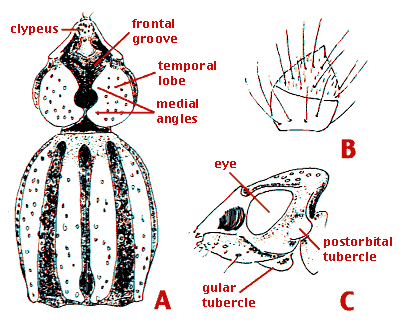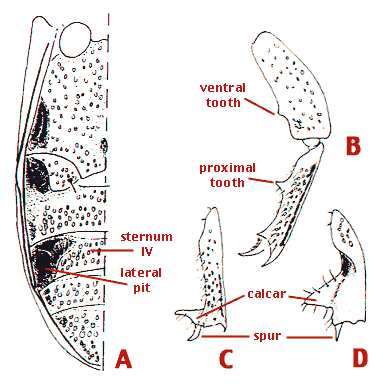Omoglymmius (Pyxiglymmius)
Ross T. Bell.png?x=1878643939)


This tree diagram shows the relationships between several groups of organisms.
The root of the current tree connects the organisms featured in this tree to their containing group and the rest of the Tree of Life. The basal branching point in the tree represents the ancestor of the other groups in the tree. This ancestor diversified over time into several descendent subgroups, which are represented as internal nodes and terminal taxa to the right.

You can click on the root to travel down the Tree of Life all the way to the root of all Life, and you can click on the names of descendent subgroups to travel up the Tree of Life all the way to individual species.
For more information on ToL tree formatting, please see Interpreting the Tree or Classification. To learn more about phylogenetic trees, please visit our Phylogenetic Biology pages.
close boxIntroduction
Pyxiglymmius is a moderately sized subgenus with ten species from the Oriental region north to Japan. It is apparently absent from India, and the true locality of one species (O. lederi) is unknown.
Characteristics
The antenna does not have an apical stylet. The basal setae are present on antennomeres VIII-X (in most species also on VI and VII). The clypeal setae are absent. The frontal grooves are deep and complete. Each temporal lobe has two medial angles widely separated by emargination. The medial margin is without a translucent area. The postorbital tubercle is present. The eye is large and distinctly facetted. The gular tubercle is prominent in most species.


Omoglymmius (Pyxiglymmius) cristatus. (A) Dorsal aspect of head and pronotum. (B) Antennal segment XI. (C) Lateral aspect of head. Modified from Bell and Bell (1982). Copyright © 1982 Ross T. Bell and Joyce R. Bell.
The punctures of the abdominal sterna are scattered. The lateral pits of the female are very prominent on sternum IV. In most species they have a complex structure with a "brace" and with longitudinal striation.
The spur of the middle tibia is curved anteriorly. The male has a proximal tooth on the anterior tibia, and a ventral tooth on the anterior femur. The calcars are large and conspicuous. That of the middle tibia is slender and nearly cylindrical. That of the hind tibia is very large, compressed, triangular, and separated from the spur by distinct emargination. The hind tibia of the male is bent in the middle and swollen proximad to the middle.References
Bell, R. T. and J. R. Bell. 1982. Rhysodini of the World Part III. Revision of Omoglymmius Ganglbauer (Coleoptera: Carabidae or Rhysodidae) and substitutions for preoccupied generic names. Quaestiones Entomologicae 18: 127-259.
Bell, R. T. and J. R. Bell. 1993. Rhysodine beetles (Insecta: Coleoptera: Carabidae or Rhysodidae): New species, new data, and revised keys to Omoglymmius (Subgenera Omoglymmius and Pyxiglimmius). Annals of Carnegie Museum 62(2): 165-185 .
About This Page
Ross T. Bell

University of Vermont, Burlington, Vermont, USA
Page copyright © 2000 Ross T. Bell
All Rights Reserved.
- First online 01 March 2000
Citing this page:
Bell, Ross T. 2000. Omoglymmius (Pyxiglymmius). Version 01 March 2000 (under construction). http://tolweb.org/Omoglymmius_%28Pyxiglymmius%29/2048/2000.03.01 in The Tree of Life Web Project, http://tolweb.org/






 Go to quick links
Go to quick search
Go to navigation for this section of the ToL site
Go to detailed links for the ToL site
Go to quick links
Go to quick search
Go to navigation for this section of the ToL site
Go to detailed links for the ToL site